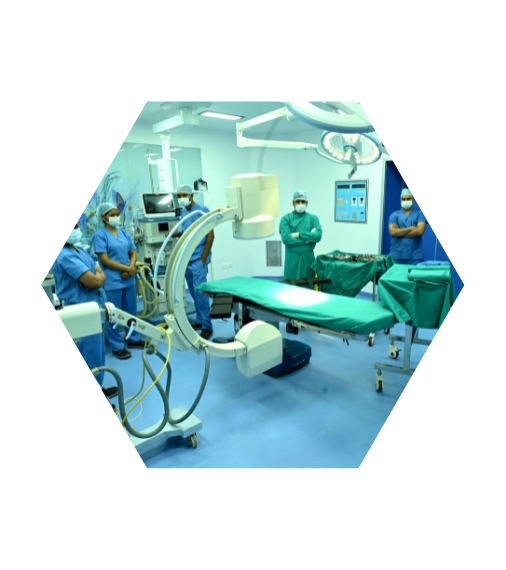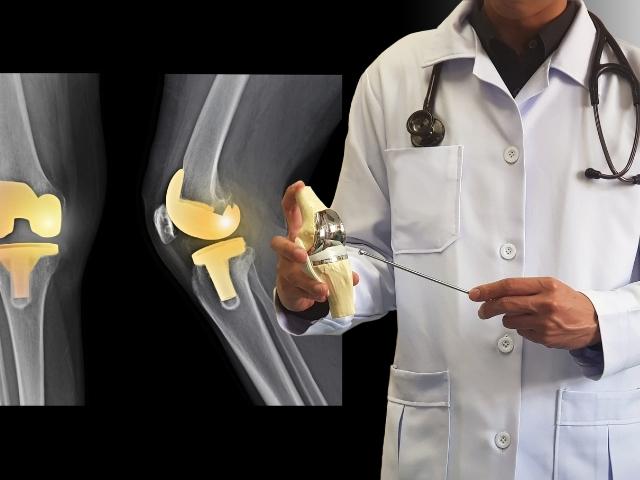- 374-C, Amrapali Circle, Vaishali Nagar, Jaipur
Knee Replacement Surgery
Best Knee and Joint Replacement Amar Jain Hospital
Amar Jain Hospital, a NABH-accredited Private Hospital located in Vaishali Nagar, Jaipur, is renowned for providing top-quality healthcare services including government schemes RGHS (Rajasthan Government Health Scheme) and CGHS (Central Government Health Scheme). Here are some of the key specialties and services offered by the hospital:
Amar Jain Hospital Provides Best Orthopedics and Knee Joint Replacement:
The orthopedic department of Amar Jain Hospital specializes in joint replacement surgeries, including knee joint replacements. Patients receive personalized treatment plans for musculoskeletal conditions.
Knee replacement surgery, also referred to as knee arthroplasty, is a medical procedure that can alleviate knee pain and enhance one's quality of life. During this surgery, the damaged or worn-out surfaces of the knee joint are removed and replaced with implants. These implants consist of a metal alloy that covers the end of the femur (thigh bone) and tibia (leg bone), while a spacer is positioned between them to provide a cushioned, smooth gliding surface. Additionally, a special polyethylene is utilized to resurface the knee cap (patella).
Amar Jain Hospital, a NABH-accredited Private best Joint Replacement Hospital located in Vaishali Nagar, Jaipur Provides best knee replacement surgeon in vaishali nagar, jaipur. Amar Jain Hospital have India's best Team Of Surgeons. Advanced Knee Replacement Surgery to Repair Damanged Knee Due to Arthiritis. Get Assured Price Cost. All Insurance Accepted.

What are the Types of Knee Replacement Surgery?
The two primary types of knee replacement are total knee replacement and unicondylar knee replacement.
Total Knee Replacement Surgery
Total Knee Replacement or Arthroplasty is a surgical procedure that involves replacing the worn-out bone surfaces of the knee joint with prostheses. The prostheses are made up of three components: the femoral component, covering the end of the thigh bone, the tibial component, covering the top end of the shin bone and made of metal and medical-grade plastic, and the patella or kneecap made of polythene, which is replaced in some cases. Patients with severe arthritis in both knees can have both knees replaced at the same time after a thorough medical evaluation. The procedure can also be performed with the assistance of computers, which improves implant alignment and surgical precision. Prior to surgery, orthopedics evaluate the medical history, conduct physical examination, X-rays, MRI, and blood tests to determine whether total knee replacement surgery is the best option to relieve pain and improve function.
Unicondylar Knee Replacement Surgery
Unicondylar Knee Replacement is a surgical option for patients who have only one-half of the knee joint damaged. In this procedure, only the affected side of the knee joint is replaced with prostheses. This surgery is recommended by the surgeon after evaluating the patient's condition. Compared to total knee replacement, unicondylar knee replacement is a more cost-effective option with a faster post-operative recovery.
Why Knee Replacement Operation is Done?
Severe knee damage caused by arthritis or injury can make it challenging for patients to perform daily activities, such as walking or climbing stairs. When non-surgical treatments like medication and walking supports are no longer helpful, total knee replacement surgery may be recommended by the doctor to relieve pain, correct leg deformity, and enable patients to resume normal activities.
The knee joint is the most complex joint in the body, consisting of the patella, distal femoral condyles, and proximal tibial plateau. The ends of these bones are covered with articular cartilage, which enables smooth knee movement. If the cartilage is damaged, it cannot repair itself, and knee replacement surgery may be necessary.
Knee replacement surgery is typically performed when patients experience pain, stiffness, deformities, joint swelling, and decreased joint movement due to conditions like osteoarthritis, rheumatoid arthritis, infective arthritis, traumatic arthritis, or gouty arthritis.
Who is Right Candidate for Knee Replacement Surgery?
In cases where medical treatments are unsuccessful, surgical options may become necessary. The medical treatment for knee replacement surgery includes activity modification, anti-inflammatory medications, and joint injections. Knee replacement surgery may be indicated in cases where medical treatments fail to relieve pain, there is significant joint deformity impacting daily activities, instability of the knee joint, or limited range of motion of the joint.
Diagnosis Before Knee Replacement Surgery
History and clinical examination, Standing X rays of the knee joint, Some patients may need knee CT Scan/ MRI
What to Expect with Knee Replacement Surgery?
After knee surgery, certain activities should be avoided, such as squatting, sitting crossed leg, using an Indian commode, and high-impact activities like sports and heavy physical work. Patients should discuss their individual needs and concerns with their surgeon before accepting Total Knee Replacement surgery.
After the surgery, patients are moved to the post-operative observation room, where they wear a bandage with a drain tube to minimize the risk of infection. Patients may also receive fluids, antibiotics, or a urinary catheter if necessary. The surgeon supervises the knee rehabilitation program, which usually begins 24 hours after surgery.
The rehabilitation program includes isometric quadriceps exercises, bed-side sitting, standing, walking with a walker, and knee bending exercises. Patients may use a walker for up to 6 weeks and a stick for the next 6 weeks. After 3 months, patients can walk unaided, and physiotherapy continues for 6 months after surgery.
